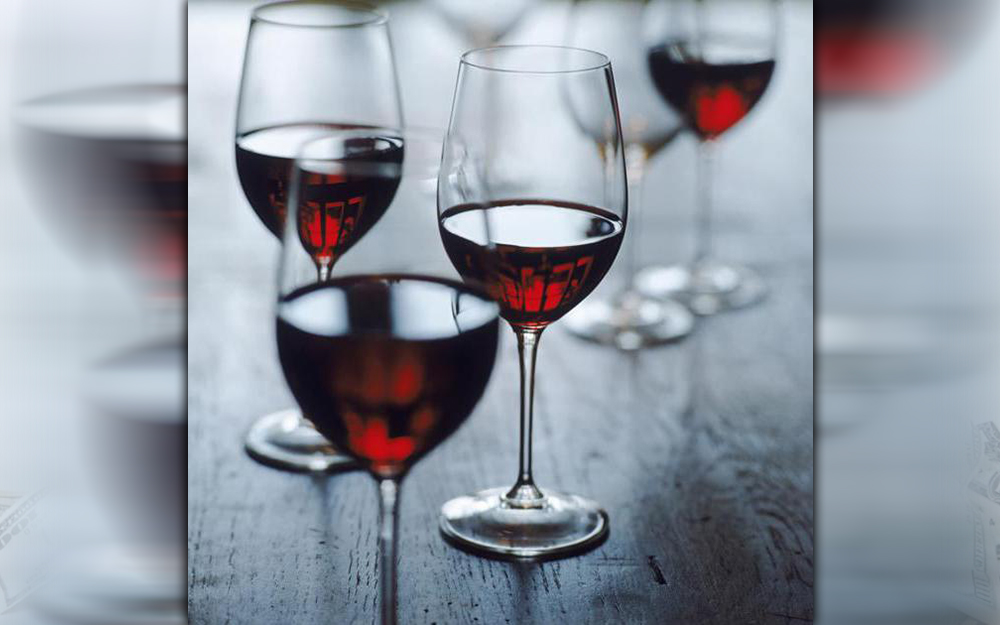
BY RICK RIOZZA
When it comes to one’s favorite red Italian wine, we of course hear about Tuscany’s great Sangiovese based wines such as Chianti, Brunello di Montalcino and Vino Nobile de Montepulciano. Or, the other fan favorite is of course Nebbiolo with its stately and bold Barolo and Barbaresco. Certainly, for me, these wines have been on the top of my vino list forever.
But now it’s time to speak of another red Italian that just knocks my socks off. This one is from the south of Italy, east of Napoli. Perhaps you’ve seen a bottle or label that says, L’Aglianico del Vulture. If the Italian language is not in your wheelhouse, you may have refrained from pronouncing the wine out loud. But we’re in a new day and age where no one is afraid to try saying French or Italian wine names.
For you red wine enthusiasts—especially Italian red wine lovers, let’s get this pronunciation down right out-of-the-gate so one can talk about & request this wine, and, absolutely enjoy its qualities for the rest of one’s life. It’s actually quite easy to say. Aglianico del Vulture: “al-YAH-nee-co—dell—VOOL-too-ray”. (Some publications will have it “allee-an-nico”—but no one in Italy says it that way.)
Okay—so much for the lesson, time to describe the wine: the general profile you’ll find black cherries, blackberries, black currants, black pepper, coffee, dark chocolate, earth, herbs, honey, leather, minerals, plums, roses, smoke, spices, tar, and tobacco. Young Aglianico wines are known for strikingly savory flavors of leather, white pepper, black fruits and cured meat that when aged, develop soft dusty aromas of dried figs and sun-tanned leather. For those of us who are a fan of rustic, earth-driven wines, Aglianico is a star.
Those who desire a bold red wine which weaves complexities with some wonderful fruit, that is quite dry and not fruity sweet, find their camp here: Aglianico del Vulture, grown around the extinct volcano, Monte Vulture, brings more plum, berry and spiced expressions of the grape with an earthiness in the realm of coffee or espresso and sturdy but fine grained tannins. The Aglianico Taurasi version, grown much closer to Naples, tends to deliver a more floral expression with brooding aromas of rose and sour cherries. It’s high on acidity along with gripping tannins; again this is for the bold and beautiful!
And just like Nebbiolo, well made Aglianico come into their best around 10 years or so. Time softens the wines firm tannic structure and enamel-removing acidity revealing lush layers of naturally sweetened fruit and dried floral aromas intermixed with dusty and spiced smoke savory flavors.
Knowing about Aglianico’s rigid nature, some producers make it into a much fresher, easy-to-drink style. Given that the grape has so much tannin and acidity it easily holds up to new oak aging and modern winemaking; it may have less of an expression of a particular terroir, but on the plus-side, it’s friendly to drink now and will sop up any beef brisket. Ask your wine purveyor what style they carry; and, these under-the-radar wines sell so reasonably—great bang for the buck, from around $15 to $25.
The structure of Aglianico makes for high intensity food pairings. Because of the high acidity, Aglianico does wonderfully alongside barbecue sauce. Also, High tannin wines like Aglianico beg for rich meats with high fat content to absorb the astringency: Smoked Pork, Soppressata, Barbecue Beef, Carne Asada, Seared Prime Rib, Buffalo Burgers, Venison, Beef stew and Chili. As for cheeses: Pecorino, Asiago, Grana Padano, Cheddar, Monterey Jack, Provolone,
If you’re a vegetarian, hone in on flavors with a rich umami note, such as black bean sauce, soy sauce, Indonesian temper, lentils, black-eyed peas, and dishes that welcome roasted mushrooms.
A couple of columns ago, we offered our condolences to winemaker Shauna Rosenblum, from Rock Wall Wine Co. Her dad, the famed pioneer winemaker of the modern California Zinfandel movement, Kent Rosenblum, died unexpectedly from complications after knee replacement surgery. You know his delicious Zins through the years, and we’ll surely miss his talents.
I’m a member of Shauna’s Rock Well Wine Company “Club Viva!” and I receive their newsletter. www.rockwallwines.com/ClubViva. I recently tried her Rock Wall 2016 Heringer Aglianico, $30, and it was the best California version of this Italian grape that I’ve tasted! I totally agree with her comments, “This sexy wine boasts aromas of bright cherry, pipe tobacco, iron, and blueberry, followed by flavors of pomegranate, black tea and plum.”
This Cal-Aglianico is food-friendly delicious! Great acidity with complex fruit. It’s a treat and one of my favorite wines this year!
You know, even the most seasoned wine snob has tripped over some wine terms or names. Below are some wine names and terms that you may wish to say correctly.
Meritage: MARE-ih-tej, it rhymes with “heritage” A lot of folks like to “French” it up, saying Mare-ih-TAHJ. This word, created to describe American-crafted, Bordeaux-style red blends, is a mashup of “merit” and “heritage.” It’s actually a trademark name up in Napa County—so if you use it on your label, you’ll need to afford to.
Gewürztraminer: geh-VERTZ-trah-MEE-ner. There’s an inside joke in the wine world that if you can’t pronounce Gundlach-Bundschu Gewürztraminer you shouldn’t be driving. If you’re ever in doubt, just use the shortened version: geh-VERTZ.
Riedel: It rhymes with “beetle”. It’s that Austrian glassware you see all over with shapes that purposefully match the wine varietal. Most people say “Rydell” as in Bobby Rydell, but the Europeans will be quick to correct you.
Beaujolais: It’s Boh-juh-lay. Not really “Booooo-jo-lay” but around Halloween time, maybe.
Trockenbeerenauslese: This of course is one of the best dessert wines in the world. In German, “trocken” means “dry”. It is a sweet German white wine made from selected individual grapes picked later than the general harvest and affected by noble rot. “Bear-en-owsh-layzr” is do-able after saying “troken”. Cheers!








































